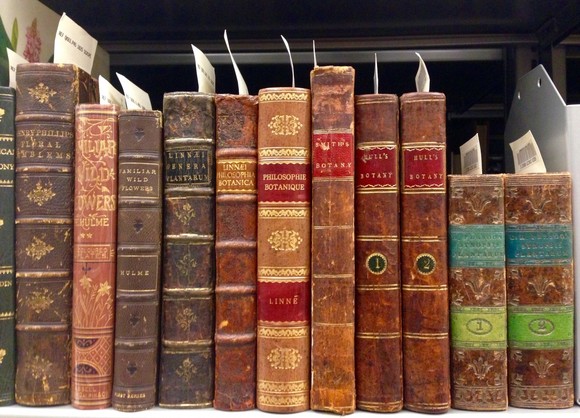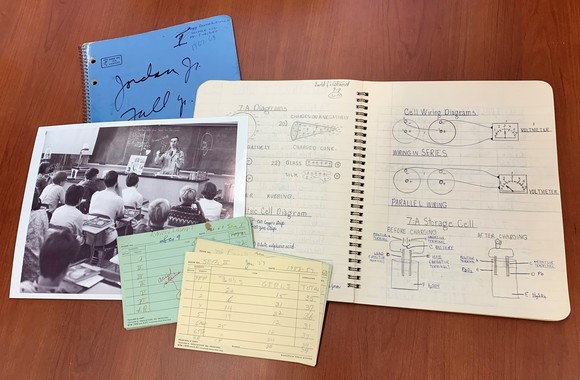|
April 2022
Greetings local history friends,
Check out what is new and noteworthy this month in Special Collections.

Last month we mentioned that the CLIR-funded City Images project was wrapping up. However, a generous donation from Ann Calvert, formerly of the City’s Department of Community Planning and Economic Development (CPED), has led to additional funding from the Friends of Hennepin County Library to continue the project through the end of the year! Our excellent project worker, Abbey Hemken, has agreed to continue working on the project, which will allow us to digitize thousands of additional photographs for the City of Minneapolis Collection. Our thanks to Ann Calvert and the Friends of HCL!

Will began volunteering in Special Collections in 2017. He is one of several volunteers who has been reviewing and sorting hundreds of thousands of newspaper morgue files, which are the source for our Minneapolis Newspaper Photograph Collection. Will is a lifelong resident of Minneapolis—from Barton Grade School in South Minneapolis to a PhD in Geography at the University of Minnesota. He remembers streetcar rides to the old Main Library on 10th and Hennepin. Will retired from the UofM in 2014 and finds his library volunteer work both interesting and fulfilling.
Q: What’s one of the most memorable things you’ve encountered while working on this project?
A: Many of the stories we see are related to World War II. Our charge [with war photos] is to identify and save Minnesota-related photos—not just Hennepin County. This past week I found a Minneapolis Daily Times story from September 22, 1945 – less than 3-weeks after the official end of WWII. Willis E. Tulare, a B-17 navigator from Rochester had been discharged after 25-missions over Europe. He used his GI-Bill to resume his education at the University of Minnesota. In the photo, he and his wife are standing in front of Pillsbury Hall. To me, that story encapsulated Minnesota’s contributions to the war effort and projected its future.
Q: Favorite place in Minneapolis or Hennepin County?
A: I love Northrop Auditorium. I spent my college days and career at the University of Minnesota. That building and the Mall symbolize the UofM. Architecturally I have not seen its peer on any campus in the world. The same is true of its intellectual and social activities. As a freshman, we’d have a weekly class there, with world-renowned speakers like Robert Penn Warren. As an employee, I’d spend summer lunch-hours listening to music outdoors on the Mall. Before the Weisman Museum was built, I’d sometimes wander up to Northrop Gallery to look at Georgia O’Keefe’s poppies and other wonderful paintings. And as retired person, I love attending the Northrop Dance Series—most recently the Martha Graham Dance Company.
Q: Favorite book of all time?
A: When I was just out of college, I read The Magus (1965) by John Fowles. It was the story of a young man in the similar situation of taking his first job, trying to find his way. Fowles hero’s job was teaching English on a Greek island—within sight of land but removed from it. Some of the most interesting careers are like that—trying to do something new, beyond the well-understood world. I visited that island, Spetses, in 2016.

Registration is now open for this 55+ Minneapolis Community Education program. Register for one of two sessions.
Tuesday, April 26, 10-11 a.m. or 1-2 p.m.
Minneapolis Central Library, Special Collections (4th floor). Registration required.
Our rare book collections include books dating back to the 16th century, and topics ranging from abolition and anti-slavery to natural history. View a selection of highlights from the Special Collections and Minneapolis Athenaeum, learn about printing techniques, and get a behind-the-scenes look at the library’s climate controlled rare book storage. The tour will begin in the Special Collections department on the 4th floor of Central Library. This program is in collaboration with Minneapolis Community Education and is intended for ages 55+.
 New Finding Aids
Correspondence and documents chronicling J.S. Futcher's thirty-year career as a science teacher in the Minneapolis Public Schools. Materials include notes and compiled memories written by Mr. Futcher, original or duplicate copies of school publications and correspondence, correspondence with past students, and student notebooks created in Mr. Futcher's classes. Mr. Futcher taught at Jordan Junior High School, Northeast Junior High School, Jordan Fundamental School, and Roosevelt High School from 1957 until his retirement in 1985.
View finding aid
Minutes, correspondence, organizational documents, and other records created by People of Phillips neighborhood organization from 1988 to 1994. Materials were compiled by Mary Moore, former board member. One folder of materials from Phillips West neighborhood in the 2000s is also included. Created in 1988, People of Phillips was the official neighborhood organization for the Phillips community in South Minneapolis. The organization dissolved in 1998 due to financial difficulties uncovered through city and state audits.
View finding aid
Recent acquisition
St. Paul's Episcopal Church camp photos
St. Paul's Episcopal Church was founded in 1880 in downtown Minneapolis. Starting in 1898, the church sponsored a summer camp for its choir boys. Early camps were held at Lake Minnetonka, Chisago Lake, and Lake Sylvia near Annandale. In 1928, the church purchased 18-acres near St. Croix Falls on Wisconsin's Deer Lake and named it “Camp Lawton.” Increasing competition from other camps and rising costs led the church to sell Camp Lawton in 2006. This donation includes photos of the camp grounds and camp attendees over the years.

The first skyways appeared over downtown Minneapolis 60 years ago this year. Opened in the fall of 1962, the very first skyway connected the Northstar Center with the Northwestern National Bank Building. Skyways have continued to appear over our heads downtown ever since, and Minneapolis now boasts 9.5 miles of skyway! The newest addition to the skyway system connects our own Minneapolis Central Library to the downtown network.
Explore photos of skyways in the HCL Digital Collections.
 |
|
Special Collections is open Monday through Thursday 9am-4:30pm. Appointments are not necessary, but you do need to call Special Collections or check-in at the 4th floor reference desk upon arrival for department access. You can speed up your visit by requesting materials be pulled in advance. Masks are currently required regardless of vaccination status.
Don’t forget, even though Special Collections is now open, we can still help you with your research needs remotely. Need a scan of a book chapter from the Minneapolis History Collection? Looking for newspaper articles on a topic? Need a city directory look-up? We are here to help.
|
Photo: 10-month-old Bobby Calguire, who started walking, talking, and playing games very early. Here he demonstrates using a telephone.
Email specialcoll@hclib.org or call 612-543-8200.
|